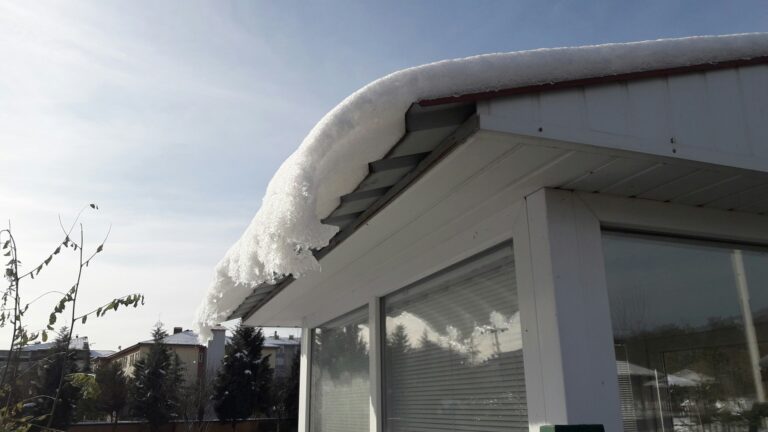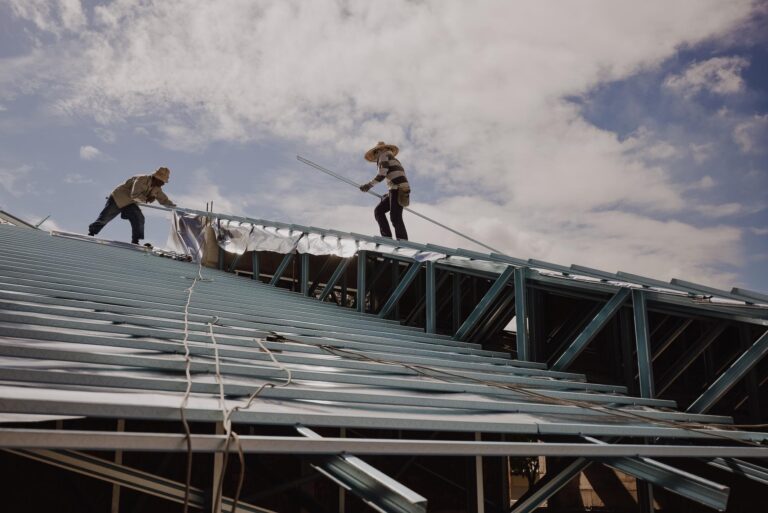When people think about metal roofs, they often picture strong panels, clean lines, and materials that last a long time. What they may not realize is how much impact roofing trim has on the way a home or building looks. Trim doesn’t just finish off the edges and corners. It plays a big role in how polished and balanced the entire roof appears. When it’s chosen with care, metal roofing trim adds character and style while also offering protection in places where panels connect or change direction.
If you’re planning a new project or looking to refresh the look of an existing roof, trim is worth paying close attention to. It can highlight roof angles, tie everything together, and bring sharp details that improve your curb appeal. There are several types of metal trim available, each with a different use. Knowing the purpose of each one makes choosing the right pieces a lot easier.
Different Types Of Metal Roofing Trim
The purpose of trim goes beyond appearance. These pieces are there to seal, support, and protect sections of the roof where panels alone don’t fully cover. When installed the right way, trim helps prevent leaks and creates a smooth transition between parts of the roof. Here’s a list of the most common metal roofing trim options and what each one is used for:
1. Eave Trim
Eave trim finishes the lower edge of a roof where it meets the walls. It helps direct water into the gutters and keeps moisture away from the wall structure. A clean eave trim also gives the roof a sharper outline, especially when viewed from the street or driveway.
2. Gable Trim
This piece runs along the edges of the roof at the end walls, shaping the sloped sides of gable-style roofs. It covers gaps where panels stop and creates a closed-in look. Gable trim also protects the edges from wind and water damage.
3. Ridge Cap
The ridge is where two slopes of the roof meet at the highest point. A ridge cap covers that line to stop rain or snow from sneaking into the roof’s peak. It gives a clean, uniform look across the top and is one of the first things people notice when standing back to admire a metal roof.
4. Valley Trim
For roofs with multiple slopes or L- and T-shaped outlines, valleys are where two sections connect in a V. Valley trim channels water away from these crossing points. It also helps add definition by drawing a subtle dividing line between the slopes.
Each piece does something a little different, but together they form the full border and finish of a metal roof. Picking the right trim isn’t just about function. Trim that fits well and matches the roof in style creates a look that’s cleaner, more balanced, and more attractive from the curb.
Choosing The Right Material And Finish
Once the types of trim are chosen, the next step is picking a material and finish that match both the roof and the environment around it. Not all trim is made from the same stuff, and the right material makes a big difference in how it performs and how long it holds up.
Some of the most common trim materials include:
– Galvanized Steel: This is tough, resists rust well, and handles areas that get snow or wind better than thinner metals.
– Aluminum: This lightweight option handles moisture and salty air better, so it’s often preferred in locations with more humidity.
– Copper: Usually chosen for its appearance, copper has a warm tone that stands out and patinas over time. It’s often found on more decorative or high-end builds.
Once you’ve decided on the metal, focus on the coating or finish. Trim can be ordered in bare metal, but most people go for a painted product that matches or offsets their roof color. Finishes aren’t just for looks. They help protect the trim from scratches, UV rays, and other wear that builds over the years.
Choosing colors that blend or contrast with the roofing panels is a matter of taste. Some go with trim that matches the panel color for a seamless look, while others choose a different shade to highlight the lines of the roof. For example, a dark gray roof with black gable and ridge trim creates a strong outline that draws the eye upward.
What matters most is that the material and finish hold up to the conditions in your area. Think about sun exposure, weather patterns, and overall wear before making your final decision. A trim that fits the job and the roof design will play a big part in how well your project turns out both now and in the long run.
Installation Tips For Metal Roofing Trim
Installing metal roofing trim the right way keeps a roof protected and makes sure it looks as clean as intended. Misaligned or poorly attached trim can stand out and hurt curb appeal. To get the best results, there are a few steps worth following before and during the installation process.
Start with precise measurements. Every edge, ridge, and valley needs to be measured carefully. It helps to double-check lengths and angles before cutting trim pieces. Even slight spacing issues can create gaps that let in water or look uneven from the ground.
Use the right fasteners. Screws should match the trim color when possible, and they need to be long enough to go through the trim and into the roof without pulling loose. Spacing fasteners evenly helps the trim lay flat without warping or buckling down the line.
Where trim sections meet, like at corners or where two lengths join, ensure overlaps are tight and sealed correctly. The last thing you want is an open seam that lets water inside or flaps around in the wind. Sealing joints with quality tape or caulk, depending on location, adds another layer of protection.
Here are a few helpful things to keep in mind:
– Install from bottom to top so overlaps direct water downward
– Make sure panels are clean and dry before applying trim to help adhesives or seals work better
– Avoid stretching pieces to make them fit. Cut new sections as needed
– Use safety gear and proper tools when working at height
Once the trim is up, routine checks a couple times a year can help catch any loose fasteners or damage early. That way, small issues get handled before they turn into bigger problems. With good installation and occasional upkeep, metal trim keeps roofs looking finished and standing strong season after season.
Benefits Of Custom Metal Roofing Trim
Standard trim pieces work in many places, but not every roof is shaped the same. Custom metal roofing trim gives builders and homeowners more control over the final look and feel of their roofline. When done right, custom trim fits tighter, lasts longer, and helps buildings stand out for all the right reasons.
Custom fabrication means the trim is made to match exact measurements. This cuts down on gaps or awkward transitions and makes it easier to follow unique architectural details. Whether it’s a curve, steep slope, or a tricky intersection, customized trim handles it with cleaner lines and a better fit.
It also gives more design flexibility. You can pick the metal, the coating, and even the profile. If your goal is to match existing features or make the roof trim stand out as a bold detail, this lets you do both. A modern home with sharp lines might benefit from sleek, dark trim. A farmhouse could lean into brighter whites or a finish that mimics aged copper.
Beyond appearance, custom trim solves practical problems too. For example, a home near trees might need trim with a steeper angle to shed leaves easier. A large metal building might need extended drip edges to keep water from hitting foot traffic below.
Think of it like getting a suit tailored. Something off-the-rack might work, but one made to your shape and size fits better and usually looks sharper. When roof trim is built to match the needs of a specific project, it blends form and function without giving up either.
How Trim Details Shape Your Roof’s First Impression
Metal roofing trim doesn’t just protect. It defines the entire roof structure. It frames the slopes, seals corners, and sets the tone for the home’s exterior look. When a roof has properly chosen and installed trim, the entire structure feels more polished and balanced from every angle.
With a wide range of styles, materials, and colors available, it’s easy to find trim pieces that work well with many types of buildings. Adding in the option for custom cuts opens up even more choices, letting every roof tell its own story. Whether it’s a small detail like a shadow line under the ridge cap or a bolder contrast between the trim and panels, each of these touches adds up to stronger curb appeal.
Even from the street, it’s easy to notice when trim looks right. It ties panels together and draws clean edges that make the shape of the roof stand out. Over time, those little details make a big difference in how a building is seen and respected. Strong first impressions often start from the top.
Want your roof to make a stronger impression? The right details matter, and Acme Sheet Metals Inc is here to help you get them right. From product selection to expert advice, we’re with you every step of the way. Check out our metal roofing trim tips to make sure your roof looks sharp, seals tight, and holds up beautifully over time.



